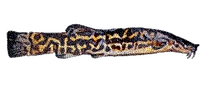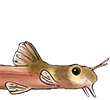On a recent "What is my catfish" thread (http://www.planetcatfish.com/forum/view ... 13&t=28587 ;I'm not actually sure there's any useful info on the thread, but just in case) I suggested that it would be a nice feature if very similar fish had some description showing how to identify them from other, remarkably similar fish. However, I recognise that it would be a tremendous amount of work to do for the whole Cat-eLog- maybe we can do it for a few, readily-confused species that crop up again and again in the "What is my Catfish" board. The thread mentioned was on identifying what was decided was a straight Pterygoplichthys pardalis, but there was also some discussion on P. multiradiatus, and Mats linked to an excerpt of Armbruster's (1997) paper, giving a key- before seeing the key I'd no idea how to differentiate multiradiatus from pardalis.
Mats suggested I post something in this section, together with suggested text (which could be rewritten totally). For this example I've just stuck with the three fish discussed in that thread
P. multiradiatus Cat-eLog entry: differs from P. pardalis and P. disjunctivus in having discrete dark spots which never coalesce into dark chevrons or vermiculations.
P. pardalis Cat-eLog entry: differs from P. multiradiatus in having dark chevrons (rather than discrete spots) on caudal peduncle, and from P. disjunctivus in largely lacking vermiculations on underside.
P. disjunctivus Cat-eLog entry: differs from P. pardalis and P. multiradiatus in having strong vermiculations on abdomen.
These additions could quote Armbruster as a reference if required- even link by a clog to his key if you think we need to cite him. It would be worth getting someone more familiar with Pterygoplichthys than me before just going live with what I've written, too- all I've done is paraphrase Armbruster's key.
Less common (though we did have one recently on the forum) is the similarity between P. parnaibae, P. lituratus and P. joselimaianus, but that's also got P. xinguensis in there, which we don't have in the Cat-eLog- the three species we have got are pretty similar-looking.
Info on distinguishing between very similar species
- Carp37
- Posts: 596
- Joined: 21 Sep 2007, 13:08
- My cats species list: 16 (i:7, k:0)
- My aquaria list: 7 (i:6)
- My BLogs: 2 (i:0, p:51)
- Location 2: Aughton UK
- Interests: fish, fishing, fossils, evolution/taxonomy, films
Info on distinguishing between very similar species
Megalechis thoracata, Callichthys callichthys, Brochis splendens (and progeny), Corydoras sterbai, C. weitzmani, CW044 cf. pestai, CW021 cf. axelrodi, Pterygoplichthys gibbiceps, Ancistrus cf. cirrhosus (and progeny), Panaque maccus, Panaque nigrolineatus, Synodontis eupterus
-
Bas Pels
- Posts: 2917
- Joined: 21 Dec 2006, 20:35
- My images: 1
- My cats species list: 28 (i:0, k:0)
- Spotted: 8
- Location 1: the Netherlands
- Location 2: Nijmegen the Netherlands
- Interests: Central American and Uruguayan fishes
Re: Info on distinguishing between very similar species
In general, it would help a lot if the distinguishing features of a fish would be mentioned.
Is, comparing a fish with a picture the color important? the nose? the amount of spikes in certain fins (it usually is)
The problem is, if we know only 1 brown species in a grey genus, this may help, but the next brown fish from this genus could just as well be an undescribed species - such features would therefore need a lot of updating
Is, comparing a fish with a picture the color important? the nose? the amount of spikes in certain fins (it usually is)
The problem is, if we know only 1 brown species in a grey genus, this may help, but the next brown fish from this genus could just as well be an undescribed species - such features would therefore need a lot of updating
cats have whiskers
- Carp37
- Posts: 596
- Joined: 21 Sep 2007, 13:08
- My cats species list: 16 (i:7, k:0)
- My aquaria list: 7 (i:6)
- My BLogs: 2 (i:0, p:51)
- Location 2: Aughton UK
- Interests: fish, fishing, fossils, evolution/taxonomy, films
Re: Info on distinguishing between very similar species
Yes, I'd thought about that (this is especially relevant where we have undescribed species that are known to be in the hobby that may be overlooked in an identification key).Bas Pels wrote:The problem is, if we know only 1 brown species in a grey genus, this may help, but the next brown fish from this genus could just as well be an undescribed species - such features would therefore need a lot of updating
Megalechis thoracata, Callichthys callichthys, Brochis splendens (and progeny), Corydoras sterbai, C. weitzmani, CW044 cf. pestai, CW021 cf. axelrodi, Pterygoplichthys gibbiceps, Ancistrus cf. cirrhosus (and progeny), Panaque maccus, Panaque nigrolineatus, Synodontis eupterus




